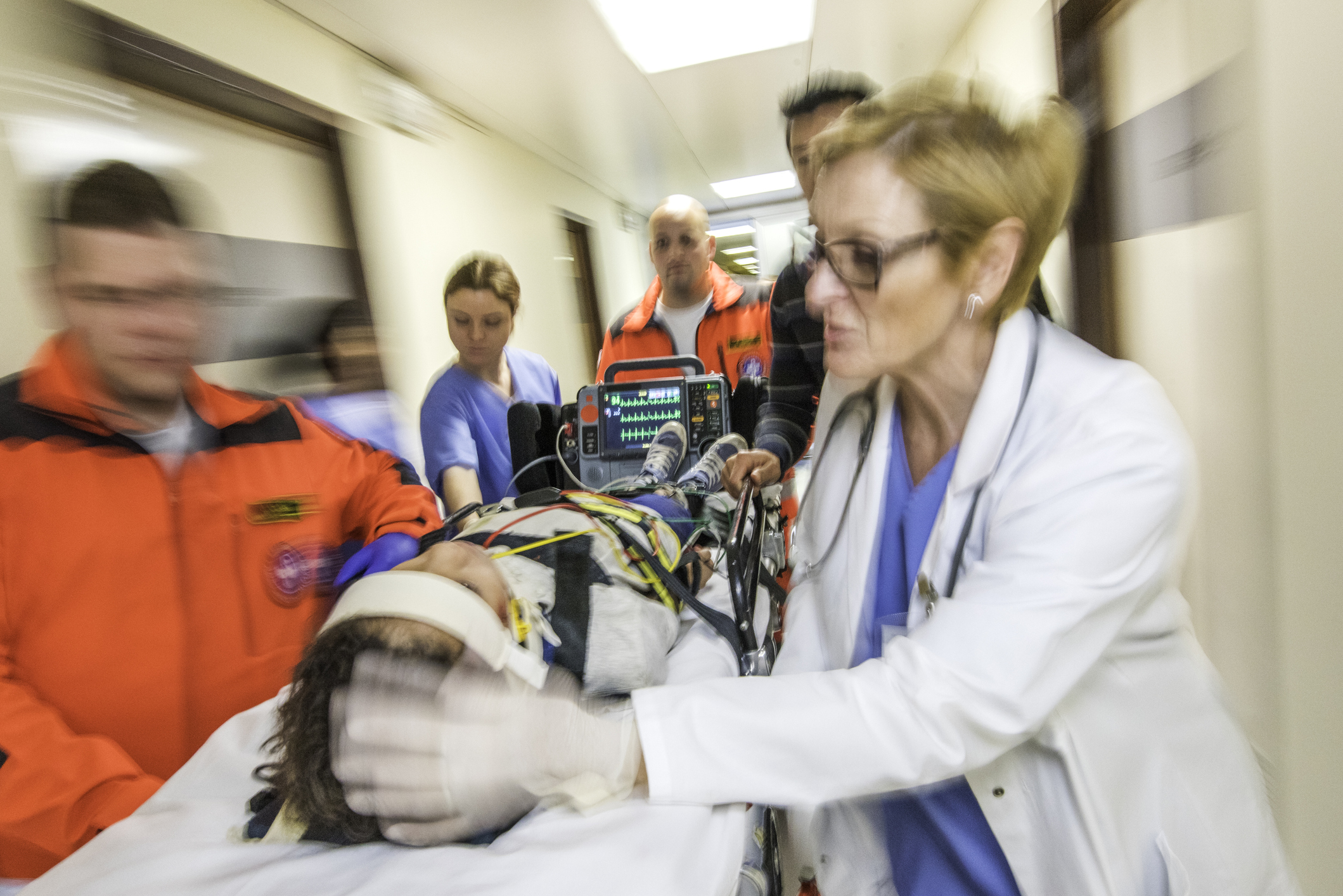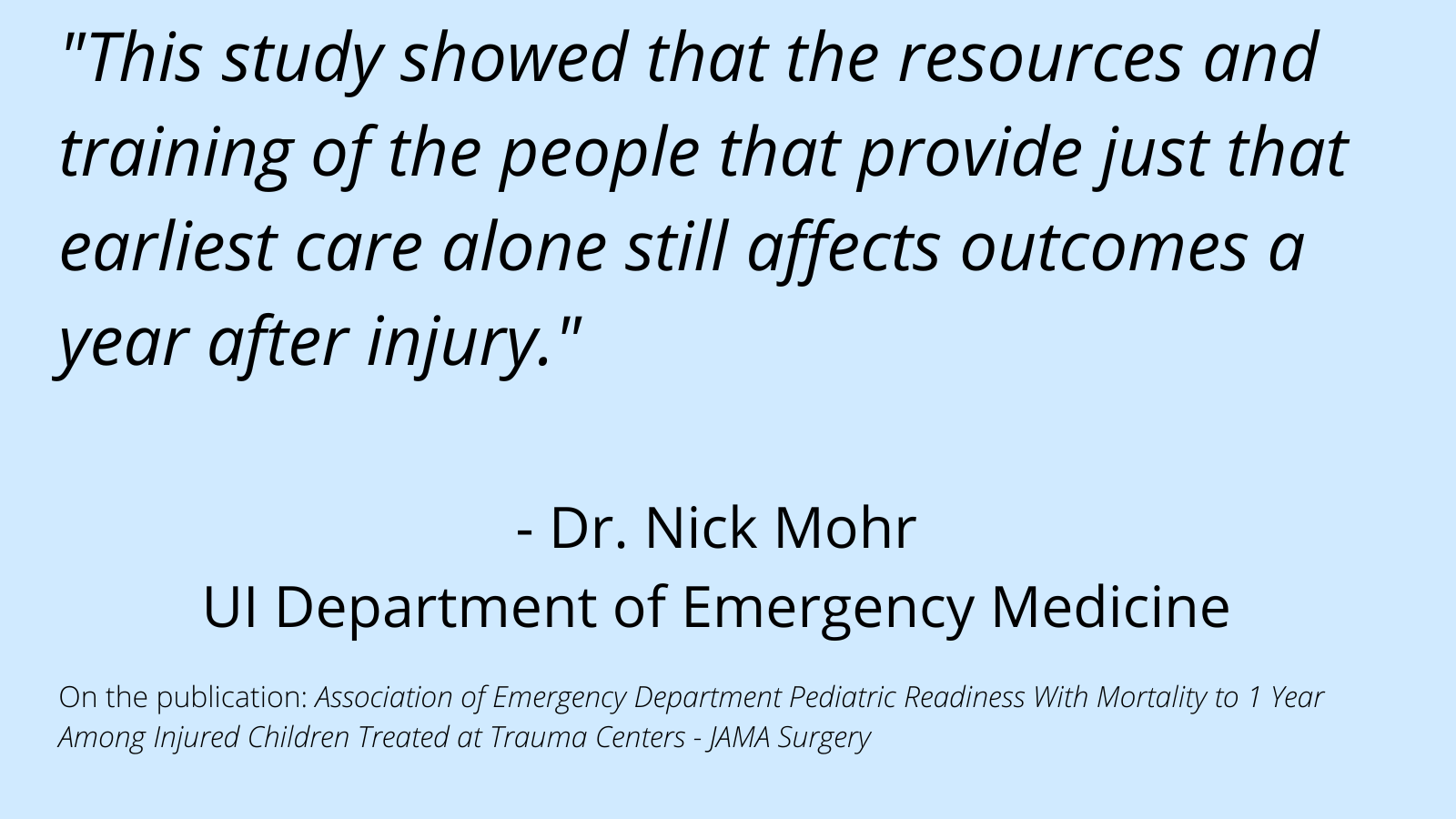When a traumatic injury occurs, time to care and quality of care are essential for survival and recovery.
Individuals, especially in rural areas, can be severely injured far from a hospital that provides the care they need. The severely injured can also arrive at hospitals that are not fully equipped or prepared to provide time-sensitive emergency care. Some injured patients need to be transferred to another hospital – causing delays in definitive care.
Nick Mohr is an emergency department (ED) physician at the University of Iowa Hospitals and Clinics and a researcher of early critical care interventions. He is also the deputy director of the U.S. Department of Health and Human Services (HRSA)-funded Rural Telehealth Research Center, which is building evidence for telehealth, especially in rural areas.
Here, Dr. Mohr talks about how ED readiness affects children with traumatic injuries and how telemedicine networks between rural hospitals and telehealth providers are helping severely injured rural patients.

Emergency Department (ED) readiness
What is ED pediatric readiness?
ED pediatric readiness is a measure of the capabilities of an emergency department to provide care to critically ill children. It uses data from a hospital survey to measure capabilities related to pediatric care coordination, ED personnel, quality improvement activities, patient safety practices, policies and procedures, and pediatric equipment.
The components of pediatric readiness were developed by a consensus of experts, and it is really related to how prepared a hospital’s ED is to provide time-sensitive pediatric emergency care.
How does ED readiness have lasting effects on a child with a traumatic injury?
Our research showed that most children who died after their injury died early in their care. In our study, we found that the risk of dying was lower among children initially treated in EDs with the highest pediatric readiness, and these differences persisted out to one year. Our findings were also observed in subgroups of the sickest patients, those with head injuries, and in children up to 15 years of age.

Why is it important to look at longer term outcomes of injury?
Pediatric trauma care is important because trauma is a leading cause of disability and death in children. Care provided in the ED is particularly impactful, but it is only a small part of the overall trauma care provided to seriously injured children. Our study showed that the resources and training of the people that provide just that earliest care alone still affects outcomes a year after injury.
Telehealth
What are some benefits of telehealth for injured patients?
Telehealth is used in some rural EDs for treating patients with severe trauma and other time-critical emergencies. We showed a few years ago [in this study] that over three-quarters of North Dakota critical access hospitals subscribed to an emergency department telemedicine service. Telehealth is used more frequently in patients with low-frequency injuries such as severe injuries, penetrating injuries like gunshot wounds, and those leading to unstable vital signs. Telehealth helps to guide local clinicians in how to take care of severely injured patients.
Telehealth can also help off-load some of the administrative burden of caring for these patients from the local clinicians so that, for instance, they can be transferred to a trauma center more quickly.

Why is telehealth important for rural communities?
Telehealth does a few important things in rural communities. First, it helps to improve access to specialty care that might not be available in a local community. Second, it can support local medical staff so that they have specialist backup when needed, and a telehealth provider can support surge capacity [ability to rapidly meet demand] in facility that does not have a lot of health care providers.
Finally, telehealth can help a local hospital treat more complicated patients, so that rural patients don’t have to leave their community for healthcare.
How does the transfer process (from one hospital to another) affect the care those being transferred?
Regionalized care is the process of getting a patient to a hospital that can take the best care of them, and inter-hospital transfer is a really important way for rural patients to access regionalized care. Obviously, transfer can be inconvenient, but it can also be lifesaving for patients who need unscheduled specialty care.
Developing strategies for identifying who needs to be transferred, developing pathways for effective interhospital transfer, and using tools, like telehealth, to leverage regionalized care locally are all effective ways to reduce rural-urban disparities in healthcare outcomes, especially for those with emergencies.
Published July 25, 2022
Resources:
Transfer boarding delays care more in low-volume rural emergency departments: A cohort study
Continuing professional education in rural emergency departments using telemedicine